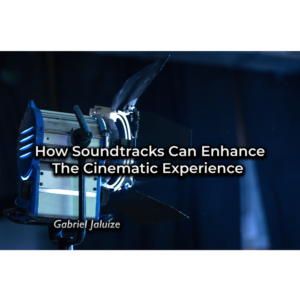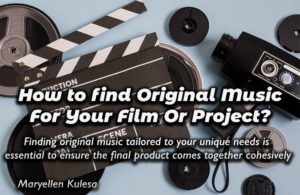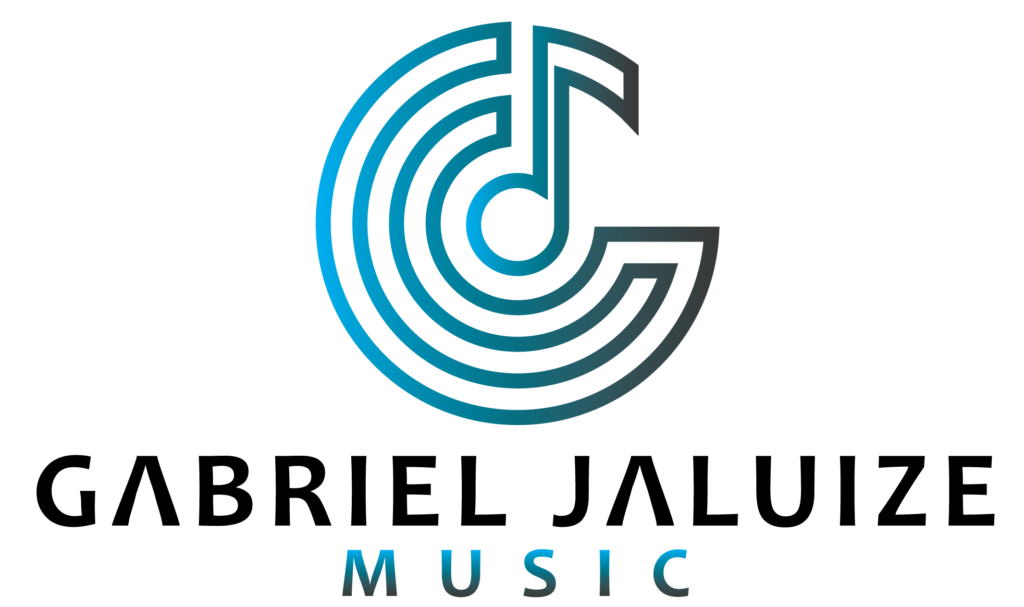Music plays a crucial role in establishing to the film a mood and atmosphere. A music composer can write and create a huge variety of music using instruments, and harmonies to create a sense of tension, suspense, love, joy, and so on. Let’s say a composer might use a string orchestra to create a sense of time and place the visuals are suggesting, or a solo piano to create a sense of intimacy and vulnerability. A music composer can also add to his piece unconventional instruments such as non-Western instruments or electronic sounds to create a unique and distinctive atmosphere, depending on the process the project can be a hybrid merge of both or more elements.
Music can also be used to create contrast between different scenes, such as using light and upbeat music in a scene and moving to a transition where the scene is darker and the music follows the path to be more intense or dramatic. In addition, music can also serve as a symbolic representation of a character’s inner thoughts or emotions, such as a leitmotif, where a specific melody is associated with a particular character throughout the film.
Overall, the role of music in establishing a film’s mood and atmosphere is crucial for the success of a film, and a skilled composer can use music to heighten the emotional impact of a film and create a truly immersive cinematic experience.
Some of the most famous and memorable film scores include:
- Star Wars by John Williams
- The Godfather by Nino Rota
- Psycho by Bernard Herrmann
- Schindler’s List by John Williams
- The Good, the Bad and the Ugly by Ennio Morricone
- Inception by Hans Zimmer
- Jurassic Park by John Williams
The Godfather Waltz, music video
How soundtracks can help to advance the plot and character development
Soundtracks can help to follow up the plot and character development in several ways. One of the most sources is the use of diegetic music, in which the motif played is related to the character and his evolution from the plot. This makes diegetic music a useful technique to reveal information about a character or a setting and to establish a specific mood.
Another way soundtracks can help to advance the plot and character development is through the use of non-diegetic music. This makes the music not be related or have a motif created for a specific character. This can include background music or a theme that is associated with a particular character or event. Non-diegetic music also can be used to create tension or suspense, indicate a change in tone, or reflect the inner thoughts or emotions of a character.
A theme or melody can link different scenes or events together or indicate the passage of time. Moreover, the soundtrack is created to fit the purpose of the director and the intentions of the plot and it can vary with both approaches although events, give clues about the character’s motivations and intentions, and create a sense of mystery and intrigue not always a need in music for certain emotions. Fast-paced and intense music could be used to indicate a dangerous scene that is about to happen, or slow and sad music could indicate the character’s inner turmoil.

Music has the ability to connect with people on an emotional level, and music directors understand the need for music and how it can be used to send a message to build up the connection between the story and the audience. Soundtracks are an incredible tool for filmmakers to immerse the audience in a certain scene but it is a must to create an interaction between music and character development. A skilled composer works to achieve a truly immersive and engaging audiovisual experience.
Here we have a few examples of soundtracks that have been used effectively to advance the plot and character development in films. Some examples include:
- In the movie “Psycho” by Alfred Hitchcock, the music composed by Bernard Herrmann creates a sense of tension and suspense, during the memorable shower scene. The screeching violins and fast-paced rhythm create a sense of danger and add to the visual experience of the film and plot.
- In the movie “Inception” by Christopher Nolan, the music composed by Hans Zimmer is used to create a sense of tension and to reflect the characters’ emotions. The music is a pulsating and cinematic vibe, with a calm and agonic twist. The violins mark a fast pace that reflects the characters’ feelings of urgency.
- In the movie “The Shawshank Redemption” by Frank Darabont, the music composed by Thomas Newman is used to reflect the character’s inner thoughts. The melancholic music approach is used to reflect the main character’s urges, while the more upbeat music is in contrast with the mood and follows up the character’s development.
Shawshank Redemption, music video
The use of diegetic and non-diegetic music in film
In the film, diegetic music is mainly used to achieve a deep connection to the character’s world. Diegetic music can be spotted in the film when for example a character is playing an instrument or a radio playing in the background of a scene.
Non-diegetic music, on the other hand, is music that is less noticeable but still has a significant job in the film but is not attached to a character world. Non-diegetic music is often used to create a certain mood or atmosphere, to build tension, or to provide commentary on the action. One example of non-diegetic music in the film is the scene in “The Shawshank Redemption” where Andy Dufresne (played by Tim Robbins) plays Mozart over the prison loudspeakers. This music is audible to the characters within the film and serves to provide a contrast to the bleak prison setting.
The song “Everybody’s Talkin” in the film “Forrest Gump.” The song is played over a montage of Forrest’s life and serves to connect Tom Hanks to the time in his mind and the situation with his friend at a specific timelapse. Another example is the score of the movie “Jaws”, composed by John Williams. The score is not diegetic, the characters of the movie do not intentionally hear the music, and the score is used to build suspense and tension.
Jaws, music video
The collaboration between filmmakers and composers in creating a film’s soundtrack
Certainly, the collaboration between filmmakers and composers in creating a film’s soundtrack is an important aspect of the filmmaking process. The composer is often brought on board early in the filmmaking process and works closely with the director and other members of the creative team to create a score that enhances the film’s overall aesthetic and narrative.

The composer will often watch rough cuts of the film and take notes on specific scenes or moments that they feel would benefit from music. They will then begin composing the score, experimenting with different themes and motifs to find the best fit for the film. Once the score is completed, the composer will work with the director and other members of the creative team to fine-tune the music and make sure it is effectively supporting the film.
The collaborative process between filmmakers and composers is critical to creating a successful film soundtrack. A great score can elevate a film, creating an emotional connection with the audience and enhancing the overall viewing experience.
Here are a few examples of successful collaborations between filmmakers and composers in creating a film’s soundtrack:
- Hans Zimmer and Christopher Nolan: Hans Zimmer has composed the scores for many of Christopher Nolan’s films, including “Inception”, “Interstellar”, and “Dunkirk.” The two have a strong working relationship, with Nolan often giving Zimmer specific instruction on how he wants the music to support the film.
- Ennio Morricone and Sergio Leone: Ennio Morricone composed the scores for all of Sergio Leone’s “Dollars Trilogy” films, including “A Fistful of Dollars”, “For a Few Dollars More”, and “The Good, the Bad and the Ugly.” Morricone’s iconic scores helped to define the genre of the Spaghetti Western and have become an integral part of the films.
- Trent Reznor and David Fincher: Trent Reznor and Atticus Ross composed the scores for David Fincher’s films “The Social Network”, “The Girl with the Dragon Tattoo” and “Gone Girl”. Reznor and Ross’s scores have been praised for their ability to create a sense of unease and tension, which perfectly complements Fincher’s often dark and brooding films.
The Social Network, music video
Understanding the different ways in which music can be used in film and the collaboration between filmmakers and composers is essential for creating a successful and effective soundtrack. So next time you watch a film, pay attention to the music, and you will see how it adds another layer of depth and meaning to the story.

AI-Generated Soundtracks: Transforming The Creative Process in Film and Animation Production



